
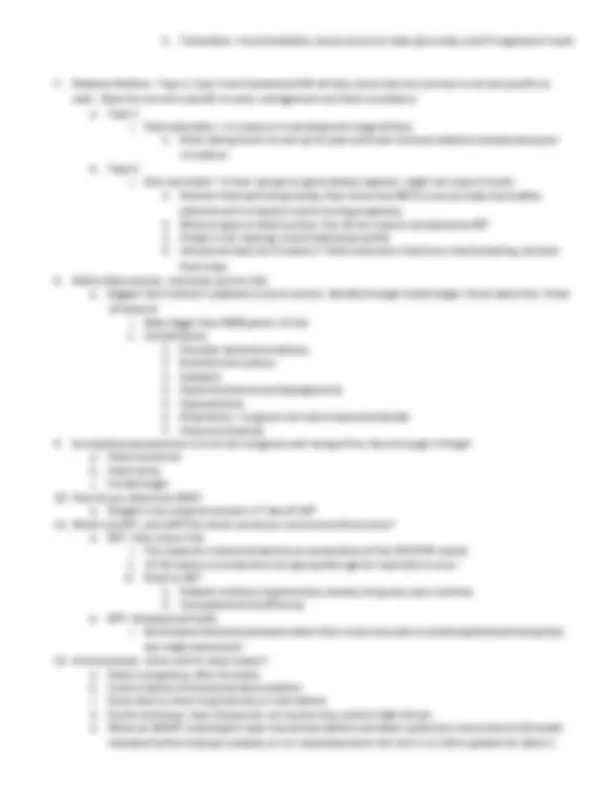
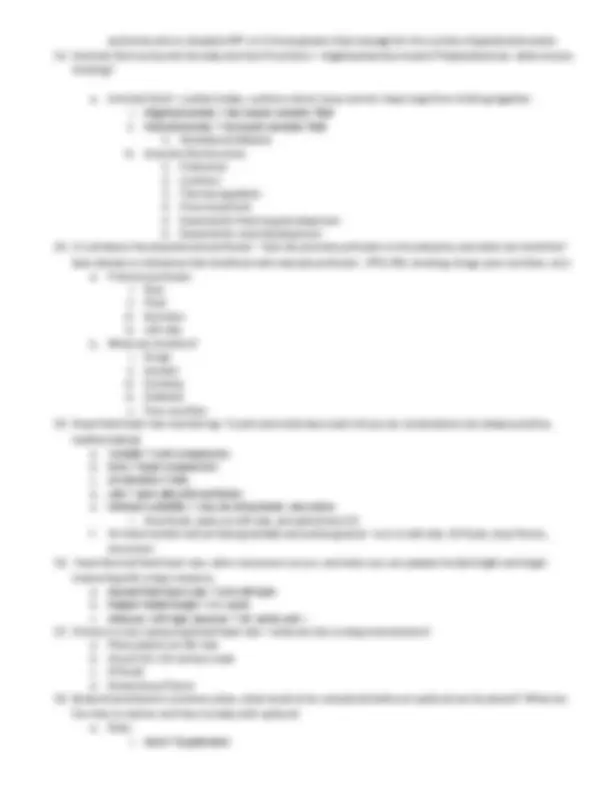
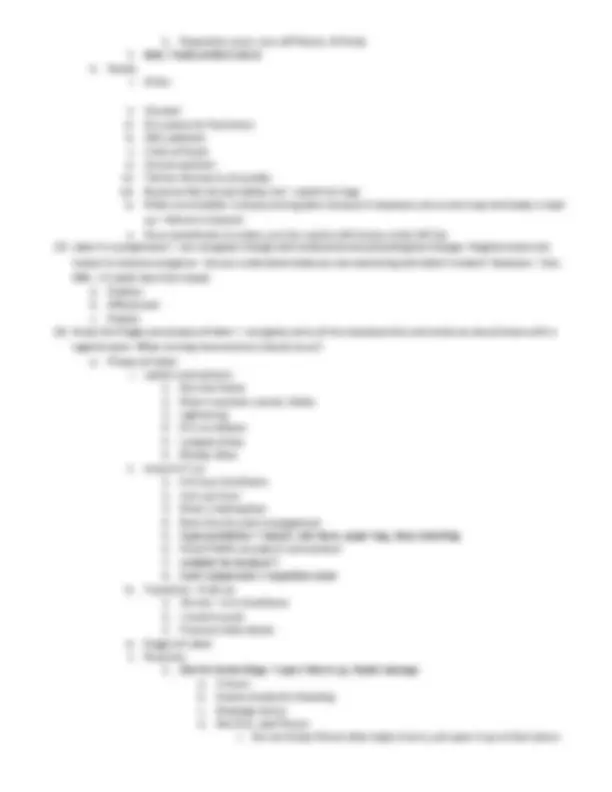
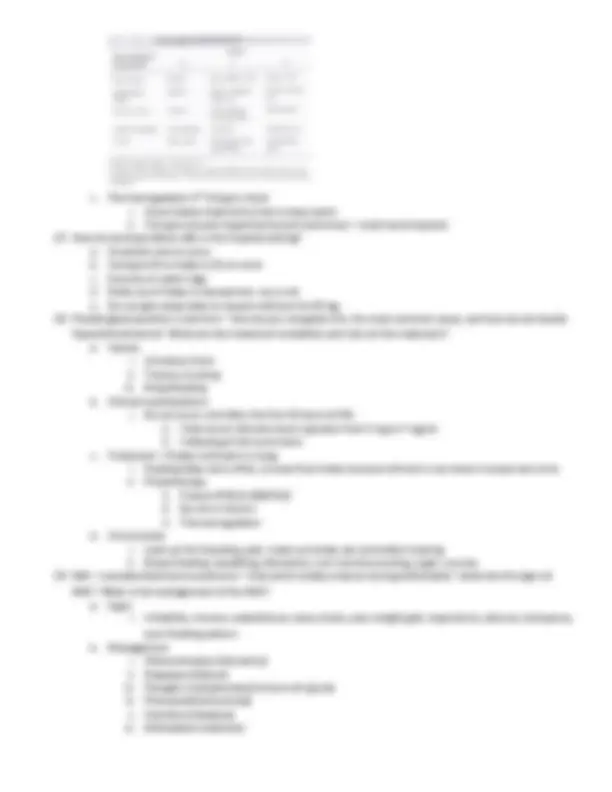
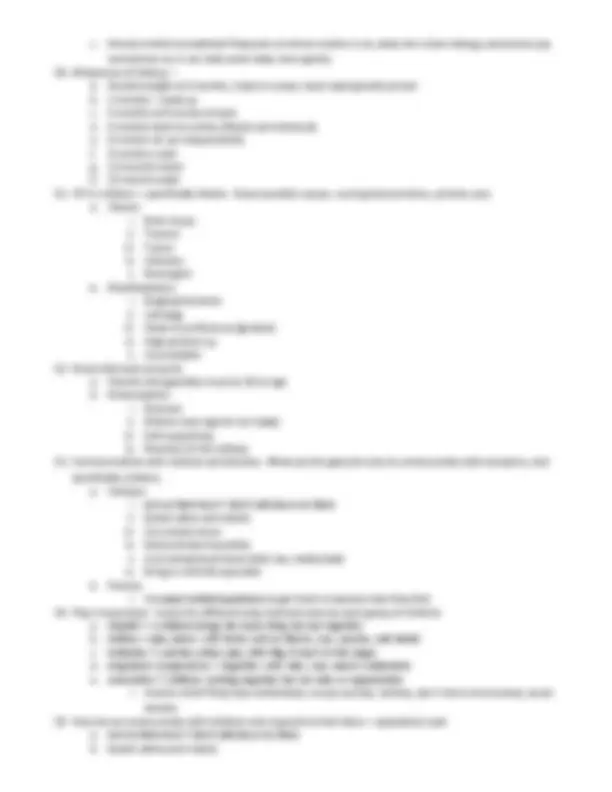
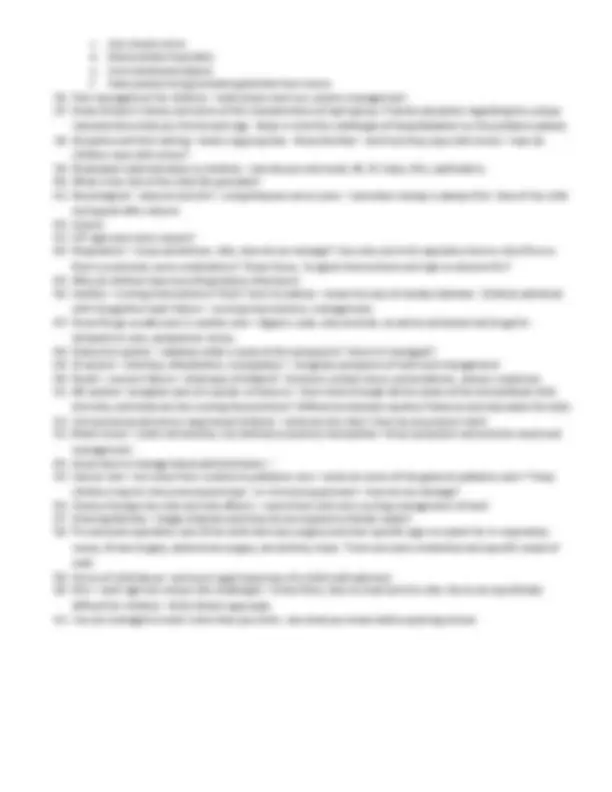


Study with the several resources on Docsity

Earn points by helping other students or get them with a premium plan


Prepare for your exams
Study with the several resources on Docsity

Earn points to download
Earn points by helping other students or get them with a premium plan
Community
Ask the community for help and clear up your study doubts
Discover the best universities in your country according to Docsity users
Free resources
Download our free guides on studying techniques, anxiety management strategies, and thesis advice from Docsity tutors
A study guide for the final exam of the Maternal Child Health Nursing course. It covers topics related to pregnancy, including trimesters, tests, obstetrical issues, anemia, hypertension, preeclampsia, pre-term labor, and stages of labor. The guide provides definitions, signs and symptoms, treatment modalities, and nursing interventions for each topic. It also includes non-pharmacological and pharmacological methods for dysmenorrhea. useful for students preparing for the final exam or studying maternal child health nursing.
Typology: Exams
1 / 10

This page cannot be seen from the preview
Don't miss anything!







1 st^ Trimester: 0-13 weeks 2 nd^ Trimester: 14 - 26 weeks 3 rd^ Trimester: 27 - 40 weeks Test GBS (group B strep) @ 36 weeks Non-stress test measures HR baseline, variability, accelerations, decelerations, and cervical activity Biophysical Profile for anybody with poor non-stress test results: amniotic fluid index, fetal movement, reflexes, and breathing activity. Amniocentesis is part of quad screening. Performed at 16 weeks
a. Iron deficiency anemia i. Prenatal vitamins, iron supplements, folic acids ii. Most prenatal vitamins have everthing but do nutrition assessment on pt; some patients don’t eat a well-balanced diet; explain caloric need to patient (300+ calories per day during pregnancy) due to BMR increasing b. Physiological anemia starts to become problem around 2 - 3 trimester because fluid increases and RBCs cannot keep up with production (they are being diluted) i. Mom is anemic baby poor oxygenation ii. Hgb levels at 10 to intervene iii. Change diet, encourage greens and raisins; nutritional means are better than supplements
syndrome and or elevated AFP is 2.5 times greater than average for the number of gestational weeks
g. Cytotex can also be given rectal medication h. Uterus should be at umbilicus and rock hard i. Assessing post delivery – manage bleeding and lochia, pain , can she void, comfort support, check fundus- should be at umbilicus, LOC, vitals, make sure she is responding; be sure she can ambulate; allow anesthesia to wear off and get to bathroom and void vi. Uterine atony – fundal massage
c. Thermoregulation 2 nd^ thing to check i. Cover babies head with a hat to keep warm ii. Trying to prevent hypothermia and cold stress – could cause hypoxia
c. Use simple terms d. Demonstrate if possible e. Use transitional objects f. Have parents bring something familiar from home